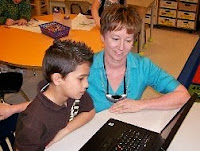The World Innovation Summit On Education-#WISE13
This week (October 29-October 31) I am in Doha, Qatar, attending the
WISE Summit. Folks from over 100 countries are gathered to talk about
what is working in education, examine current trends and discuss how
countries can work better together, to provide kids everywhere a solid
education.
After the amazing experience last year, there was no question I was
headed back when I was asked to return. The conference is full of some
of the brightest minds and best conversations.
But you don't need to head to Doha to participate. You can add your voice to the conversation no matter where you are.
First, what is WISE?
But you don't need to head to Doha to participate. You can add your voice to the conversation no matter where you are.
First, what is WISE?
How can you get involved?
Website: http://www.wise-qatar.org/ Here you will find everything WISE. When the conference gets underway you will also be able to tap into what is happening at the conference.
WISE Livestreams: http://www.wise-qatar.org/wise-summit-2013#tabs-9 You don't have to be in Doha to participate. All the major sessions are livestreamed and you can add your thoughts, ideas and reflections too.
WISE Polls: http://www.wise-qatar.org/wise-summit-2013#tabs-6 The polls are simple. Pressing questions in education are raised here. MOOCs, STEM education, data gathering, and more. The questions and responses will be shared and discusses at the summit.
WISE Infographics: http://www.wise-qatar.org/wise-summit-2013#tabs-7 Who doesn't like a great infographic? The folks at WISE have created some great ones to share. Everything from how money is spent on Education from around the world to more serious issues like the number of children who are trying to get a solid education in conflict zones. These infographics can serve as a starting point for conversations and help us see education is no just something to think about at the local level, it's a global issue.
There will be lots of discussions on Twitter too. You can follow @wise_tweets or the #WISE13 hashtag.
If this year's summit is half as good as the one last year, there is sure to be some great learning and reflections happening. I hope you can join in, no matter where you are!
My Comment
Hi! My name is Emma Boren. I am a student in EDM 310 at the University
of South Alabama. As a future educator myself, I think this is an
AWESOME program. I have never heard of it before, however, I will
definitely be looking into it more. Thank you for sharing your
experience and for sharing ways to get involved from home!
The @ASCD Arias-The 5 Minute Teacher
Recently
ASCD released several short books that are aimed at packing a big punch
in a small package. Each are less that 100 pages but have loads
of quality information. Over the next few posts we will look at each one
to see what they are all about. Then we will give away 1 copy of each.
Sound like fun? In the first post we took a look at Fostering Grit. Then we examined Teaching With Tablets and Grading and Group Work. This time we look at The 5-Minute Teacher.
Later on I learned different methods and strategies along the way that
would help alleviate some of the stress of planning (like my adoption of
formative assessments among other things.) But it took me several years
and trial and error to feel comfortable.
Enter Mark Barnes and the ASCD Arias Book The 5-Minute Teacher.
We have just a precious few moments to engage our students in learning. Mark argues that 5 minutes can make all the difference.
Mark says it best:
"I've learned that the hard way. It's the structure of the
student-centered classroom that creates a powerful, exciting learning
environment that students actually enjoy. The so called five-minute
teacher-who should be nearly invisible-is part of the fun...Five minutes
can be the most important part of the students' day. When students are
poised to learn something new, five-minutes can prepare them for
experiences that open doors and open minds. The trick is making those
five minutes count."
Mark goes on to offer suggestions on making those five minutes count.
Like the use of video to serve as a springboard to conversation or
opening class with guiding questions that get kids thinking. He also
explains the concept of being a guide on the side, being a coach rather
than a teacher. As Mark points out (and I agree) when you move from
teacher to coach you allow for more student direction in learning.
There is also a great section on helping teachers develop their own
Toolkit of Student Driven activities. Mark offers several suggestions
for technologies and platforms that can help promote student-centered
learning and engage students during and after the five minutes.
Like the other ASCD Arias books, this was a quick and easy read, full of great ideas and suggestions to turn it up a notch in the classroom. For $6.99 for the digital edition this is a great edition to any professional library.
My Comment
Hello, my name is Emma Boren. I am a student at the University of
South Alabama in EDM 310. Thank you for sharing your ideas on how to
create a lesson plan. I am an elementary education major, so I will most
likely be with the same students all day, for each subject. I feel like
I would need to grab their attention at the beginning of each subject
lesson. Any ideas on how to keep young children's attention all day
long?









